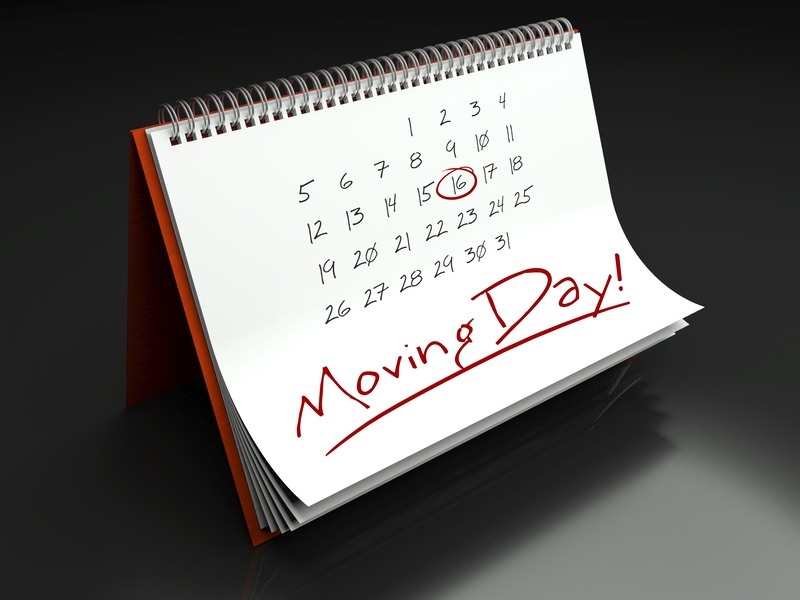The art and science of professional piano moving explained
Posted on 23/06/2025
The Art and Science of Professional Piano Moving Explained
Piano moving is a complex task that demands specialized skills, precision, and experience. Whether you have an upright, grand, or baby grand, the process of professional piano moving is both an art and a science, rooted in a deep understanding of the instrument's structure, value, and fragility. In this comprehensive guide, we will delve into the intricacies of moving a piano, shedding light on the techniques, equipment, and expertise that make professional movers indispensable for safeguarding your cherished instrument.

Why Piano Moving Is Different from Standard Moving
At first glance, hiring regular movers for your piano may seem sufficient. However, pianos are not only bulky and heavy, but also delicate musical instruments with thousands of clearly tuned parts. Any mishap can result in irreparable damage, affecting both the value and the sound quality of your piano. This is why specialized piano moving services are necessary.
- Weight and Size: Pianos can weigh between 300-1,200 pounds or more.
- Delicate Inner Mechanisms: Each piano contains thousands of moving parts needing careful handling.
- Shape and Balance: Their unique shape makes them hard to grasp and maneuver through doorways, stairs, and narrow spaces.
- High Value: Both in terms of cost and emotional attachment, pianos are often irreplaceable family heirlooms.
The Categories of Pianos and Their Unique Challenges
- Upright Pianos: Easier to fit through doorways but still extremely heavy and top-heavy, risking tipping.
- Grand Pianos: Require disassembly of legs, pedals, and music stands; more complex due to size.
- Baby Grand Pianos: More compact but still challenging due to the required delicate disassembly and reassembly.
Preparation: The Foundation of Professional Piano Moving
Prepping for a safe piano move begins long before lifting a single corner. Professional piano movers undertake a meticulous preparation phase, essential for executing a smooth relocation.
1. Piano Assessment
Every move starts with a thorough evaluation of the piano's type, model, size, weight, and age. This assessment determines which equipment and moving techniques will be needed. Older or antique pianos may require additional caution due to fragile wood or worn joints.
2. Pathway Planning
Expert movers inspect the route--from the piano's current room to the moving truck, and ultimately to its new location. They identify and address challenges such as:
- Narrow doorways and hallways
- Staircases
- Uneven surfaces
- Elevators
- Crowded environments
3. Equipment Selection and Preparation
Using the right equipment is as vital as expertise:
- Heavy-duty dollies and piano skids
- Moving blankets and padding for protection
- Straps and harnesses for secure lifting
- Piano boards or special lifting tools for grand pianos
- Measuring tools to ensure clearances
The Science Behind Moving Pianos Safely
Physics and Balance
Moving a piano safely is largely about physics--weight distribution, leverage, and center of gravity. Professionals understand how to tilt and pivot a piano so that the weight is always controlled, preventing tipping or sudden shifts that could damage the instrument or cause injuries.
Disassembly and Reassembly Techniques
- Grand Pianos: Movers carefully unscrew and remove the legs and pedals, then wrap them separately. The piano is gently placed onto a specifically designed piano board.
- Upright Pianos: Often can remain whole, but delicate parts like the music stand, pedals, and casters are wrapped or removed if necessary.
Every step is labeled and each part is cushioned to prevent scratches or dents. Assembly at the new location is done in reverse, with tuning scheduled afterward to restore perfect pitch.
Protecting the Piano and Your Home
Piano moving professionals take extensive measures to protect both your instrument and your property:
- Use of heavy-duty pads and blankets to prevent surface damage
- Securing floors and walls with temporary coverings
- Employing protective footwear and gloves for maximum safety
The Art of Professional Piano Moving
Beyond technical skills, there's an artistic touch involved in relocating a piano. This comes from experience, respect for the instrument, and often, a genuine passion for music. Here's how artistry enters the equation:
Communication and Coordination
The teamwork among piano movers is highly choreographed. Verbal signals, practiced maneuvers, and mutual trust improve safety and efficiency, ensuring that everyone moves in harmony, like a well-rehearsed orchestra.
Calm Under Pressure
Unforeseen challenges are common--tight corners, sudden weather changes, or unexpected obstacles. The best piano movers remain adaptive and calm, drawing on years of experience to creatively and safely find solutions.
Respect for the Instrument
Professional movers appreciate the historical and sentimental value of each piano. They treat every instrument as though it were their own, understanding that it may be a beloved family heirloom or a concert-grade grand worth tens of thousands of dollars.
The Risks of DIY Piano Moving
Attempting to move a piano without expert help can lead to disaster. Common risks include:
- Personal Injury: Strained backs, crushed fingers, and serious falls can occur due to the weight and awkward shape.
- Property Damage: Floors, walls, and stair railings can be scraped, gouged, or broken.
- Piano Damage: From snapped legs to severe internal harm, the risk of permanent damage is high.
- Costly Repairs: Restoring a damaged piano often exceeds professional moving fees.
How to Choose a Safe, Reliable Piano Moving Service
Not all moving companies are created equal. Selecting the right piano moving specialists is crucial.
Important Factors to Consider
- Experience: Look for a company with years of dedicated piano moving experience--not just general movers.
- Specialized Equipment: Ensure they own and use proper piano moving tools and transport vehicles.
- Insurance and Licensing: Only hire movers fully insured and licensed for extra peace of mind.
- Customer Reviews: Research online testimonials to gauge reliability and quality of service.
- Transparent Pricing: Professional piano moving quotes should include all expected costs--no hidden surprises.
Questions to Ask Your Piano Mover
- How many years have you been in the piano moving business?
- Do you offer insurance coverage for the instrument and my property?
- What type of moving equipment will you use?
- Who tunes and reassembles the piano at the new location?
- Can you provide customer references?
Frequently Asked Questions About Professional Piano Moving
How much does it cost to move a piano professionally?
Costs can vary greatly depending on the piano's type, size, move distance, and difficulty of the route. On average, professional piano moving services cost between $200 and $600 for local moves and higher for long-distance.
How long does a piano move take?
A typical upright piano move might take 1-2 hours, while a grand piano could require 3-4 hours or more, especially with complex disassembly or challenging environments.
Is post-move tuning necessary?
Yes. Even the gentlest move can affect your piano's delicate balance and strings, so a professional tuning is recommended after any relocation.
Can professional piano movers store my piano?
Many piano moving companies also offer climate-controlled storage for short- or long-term needs, protecting your instrument from temperature and humidity fluctuations.
The Value of Expertise in Piano Transport
When you invest in specialist piano relocation services, you are paying not only for muscle and equipment, but for years of specialized knowledge and refined technique. Careful planning, precision lifting, and deep respect for the instrument's artistry make all the difference.
By hiring professional piano movers, you not only reduce risk and physical strain but also honor your piano's value. Trusting the art and science of the experts ensures your instrument is moved safely and continues to offer its beautiful music for years to come.

Summary: The Secret Behind Seamless Piano Moves
- Meticulous Planning: Every detail is foreseen and managed.
- Specialized Equipment: Only the safest tools are used for both the piano and property.
- Professional Skill and Care: Experience turns a stressful chore into a smooth, damage-free event.
- Value Preservation: Your piano's unique character and sound are protected at every stage.
Final Thoughts on Expert Piano Moving
The journey of transporting a piano is a strong blend of technical prowess and artistic appreciation--truly, the art and science of professional piano moving explained. Next time you or a loved one needs to relocate a cherished instrument, remember that much more than heavy lifting is involved. Entrust your piano to the passionate professionals who treat each move as a work of art, ensuring your music plays on wherever you go.
For peace of mind, optimum safety, and the continued resonance of your instrument, always choose experienced piano moving specialists. Experience the harmony of art and science with every note your piano strikes--before, during, and after its move.



